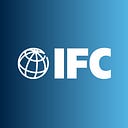Global Youth Urgently Need New Models — Public and Private — for Education and Skills
By Sérgio Pimenta
The advance of technology and automation is worsening income inequality — a serious political and economic problem undermining prosperity and social cohesion around the world. Parents and youth know very well that education is the surest way to a better life. Public policymakers know it too, but scarce resources make it difficult to directly fund investments in human capital required to support a growing, 21st century economy.

In developing countries, an estimated 341 million young people under the age of 24 are not participating in education, employment or training. In Africa, less than 10 percent of students go on to tertiary education, compared with around 30 percent on average for Latin America. Just closing these gaps requires massive increases in education investment, from public and private sources.
At the root of skills deficiencies is poor learning outcomes from primary and secondary education. According to UNESCO, 121 million children are not in primary or lower secondary school. As many as 250 million children cannot read or write.
This is why education is a priority for the World Bank Group, the world’s largest multilateral investor in education with a portfolio of over $14 billion, 95 percent of which supports public education. IFC, the member of the World Bank Group devoted to private sector development, holds an active portfolio of about $700 million in 55 projects. Just under three-fourths of this portfolio is in university, vocational education and training, followed by 19 percent in education technologies, publishing and teacher training needed in public and private schools. The remaining seven percent is in basic education.
IFC’s concentration of investment in tertiary education reflects its focus on promoting employment and productivity as a pathway to reducing poverty. IFC invests in many types of educational institutions, including for-profit and non-profit, ranging from large, very affordable universities targeting the poor such as Uniminuto in Colombia, to those targeting lower-middle income students, such as AdvTech, an integrated secondary and university institution with strong job placement in South Africa. IFC invests in vocational schools and reaches smaller training companies, such as Andela, a computer programming and apprenticeship program for Nigerians and Kenyans, through funds like the $100 million Ed Tech Fund with Learn Capital.
What these institutions all have in common is their ability to operate efficiently, incorporate best practices, reduce costs, attract capital, and bring value to students with education that expands opportunities for employment and personal fulfillment.
In some cases, such as companies with potential for benefiting education systems through technology, teaching training, or integration of vocational training, IFC invests in direct providers of basic and secondary education. Currently, IFC has three active projects of this type that have received funding in the past five years: Bridge International Academies, Merryland High School in Uganda and Maple Leaf in China. They account for less than five percent of IFC’s total active portfolio.
Bridge International Academies is controversial. It is disrupting the status quo for education and inciting passionate views among stakeholders, a reflection of education’s importance for individuals and society. This impact is exactly the reason why we should carefully evaluate new models for expanding access to affordable quality education.
IFC invested $13.5 million in Bridge because of its potential for bringing quality, low-cost basic education on a large scale to children living in poverty. Bridge is educating 98,000 students and employing 5,000 people in five countries. There is evidence that Bridge’s education programs and use of technology are effective, and we are seeking more data.
The World Bank’s Strategic Impact Evaluation Fund is supporting a large-scale impact evaluation of Bridge International Academies, the first study to offer an objective view into the causal impacts of a low-cost private school chain on student learning. This research will help public officials better regulate the low-cost private school sector. It will be conducted by leading scholars of impact evaluations in education — Michael Kremer (Harvard University), and Isaac Mbiti (University of Virginia) — and the results will be published in top-tier academic journals.
The inability of many public systems to effectively reach poor communities, coupled with low levels of learning, are reasons that parents may opt to put their children in private schools. For these reasons, the World Bank Group supports efforts to expand access to quality public education, while also by partnering with the private sector to help students not being served well today.
The stakes are too high for us to retreat into ideological positions. All actors in the education system — regulators, public providers, private providers, student financiers and companies — should join forces to promote higher quality of education from a range of institutions, based on what brings results. More investment, public and private, and new models for improving learning are urgently needed to enable youth to attain the education and skills they need to reach their full potential.
Sérgio Pimenta is IFC’s Director for Manufacturing, Agribusiness, and Services
